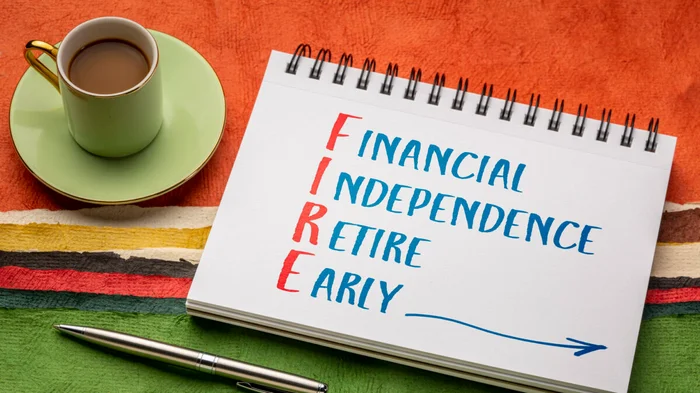Strategies for early retirement in the US have gained significant attention in recent years, especially through the popular FIRE movement (Financial Independence, Retire Early). This lifestyle aims to help individuals achieve financial freedom and retire well before the traditional age. By understanding the principles and strategies of the FIRE movement, anyone can embark on the path to early retirement.
Early retirement in the US has become an increasingly appealing goal for those seeking more freedom and time to pursue their passions. The FIRE movement offers a structured approach to saving, investing, and living mindfully to make this a reality. In this article, we’ll explore the foundational strategies and the mindset needed to achieve financial independence and early retirement.
Understanding the FIRE movement

The FIRE movement is built on the principle of aggressively saving and investing a significant portion of your income, typically between 50-70%. By doing so, the goal is to accumulate enough wealth to live off for the rest of your life without needing to rely on a traditional job.
This requires disciplined budgeting, frugal living, and making informed investment choices. Adherents of the FIRE movement often track their expenses and find ways to minimize unnecessary spending. This might involve cooking at home instead of dining out, opting for second-hand items, or even downsizing their living arrangements.
By keeping costs low, they can save more and invest the difference. Investments, particularly in low-cost index funds, play a crucial role in this strategy. The idea is to maximize investment returns while minimizing fees and taxes. With compound interest, even modest investments can grow significantly over time, making early retirement more achievable.
Frugality and minimalism
Adopting a frugal and minimalist lifestyle is a core aspect of the FIRE strategy. This doesn’t mean depriving yourself of joy but rather prioritizing spending on what truly matters. By cutting back on unnecessary expenses, you can redirect more of your income toward savings and investments. Living minimally often involves rethinking conventional norms around consumption.
Instead of buying the latest gadgets or fashion, FIRE advocates might focus on experiences, personal growth, and hobbies that don’t require substantial financial outlays. This shift in mindset is essential for maintaining a high savings rate.
Additionally, frugality can extend to major life decisions, such as choosing an affordable place to live or driving a reliable, used car instead of splurging on a luxury vehicle. Every saved dollar is a step closer to financial freedom.
Increasing income
While saving money is vital for the FIRE movement, increasing your income can accelerate your journey to early retirement. There are multiple strategies to boost earnings, from negotiating salary raises and seeking promotions to creating multiple income streams through side hustles or passive income investments. Investing in yourself through education and skills development can also lead to higher-paying job opportunities.
Advanced degrees, certifications, or acquiring new professional skills can enhance your marketability and earning potential. Entrepreneurial activities, such as starting a small business or engaging in freelance work, provide additional avenues to generate income. The goal is to create a diversified portfolio of revenue sources that contribute to your savings and investment pool.
Implementing the FIRE strategy
Implementing the FIRE strategy effectively requires discipline, planning, and a long-term perspective. Creating a detailed financial plan is the first step, encompassing monthly budgets, savings targets, and investment goals. Regularly reviewing and adjusting this plan helps maintain progress and adapt to changing circumstances.
Tracking expenses is another critical component. By understanding where your money goes, you can identify areas to cut back and improve your savings rate. Various budgeting apps and tools can simplify this process, helping ensure you stay on track. Consistency is key. The path to financial independence is a marathon, not a sprint.
Building an emergency fund
Building an emergency fund is essential in implementing the FIRE strategy. This fund acts as a safety net, providing financial security in case of unexpected expenses such as medical bills, car repairs, or job loss. Ideally, it should cover three to six months’ worth of living expenses.
Having an emergency fund prevents you from dipping into your retirement savings during unforeseen circumstances, ensuring that your investment strategy remains intact. Regularly contributing to this fund before aggressively investing can shield you from financial setbacks. Keeping this fund in a high-yield savings account or other accessible, low-risk liquid assets ensures that it’s available when needed without sacrificing growth potential entirely.
Smart investment choices
Making smart investment choices is a cornerstone of achieving early retirement. Allocating funds to a diversified portfolio of stocks, bonds, real estate, and other assets can provide a balanced approach that maximizes returns while managing risks. Investors often favor low-cost index funds due to their broad market exposure and minimal fees.
These funds track overall market performance, providing stable, long-term growth potential. Additionally, understanding tax-efficient investment strategies can further enhance net returns. Regularly reviewing and rebalancing your investment portfolio ensures it remains aligned with your risk tolerance and financial goals. With the right mix of diligence, patience, and informed decision-making, reaching early retirement becomes a tangible and achievable ambition.

